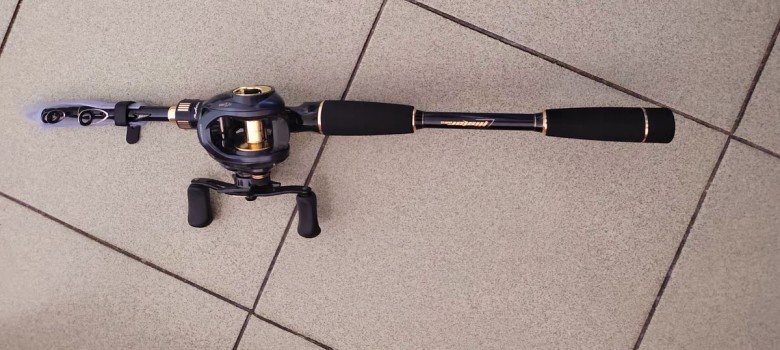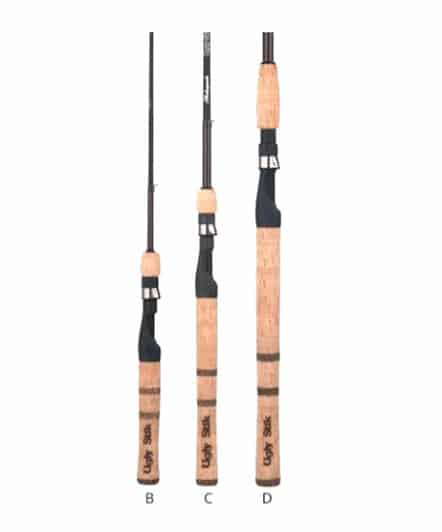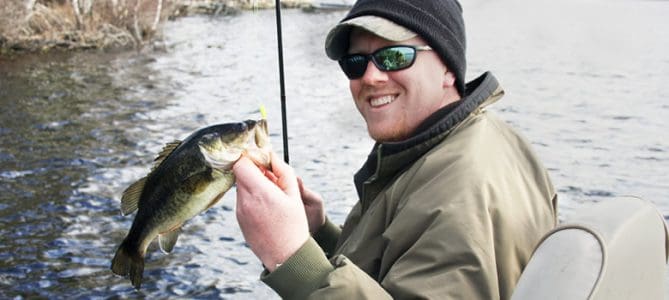If you buy via a link on this page, we may receive a commission, at no extra cost to you.Learn more
Like regular fishing rods, telescopic models have experienced serious changes. They are now more reliable, long-lasting, light, and easier to operate.
Telescopic rods have come so far that little separates them from regular fishing rods. However, there are still anglers who doubt their reliability, with integrity being the main concern.
That’s why we are going on a journey through time to discover all the improvements made. We will discuss their impact and where telescopic rods compare with regular fishing rods. We will also talk about proper usage and maintenance toward the end. So, make sure to tag along.
When Telescopic Fishing Rods Were Invented?

Everett Horton patented a collapsible fishing rod back in 1887. Although compact, that model looks nothing like the ones we see today inside tackle shops. For starters, it was a steel rod. Imagine the cost of making that rod today.
On the other hand, in Horton’s model, the line runs inside the hollow tubes. This is the reason telescopic rods exist. Horton wanted a rod in which the line doesn’t get tangled with branches as you hike.
Materials of Construction: From Metal To Fiber
Today Horton’s rod will be too heavy compared with regular fishing rods. This kind of beats the purpose we anglers get them. That’s why the industry moved towards lighter materials, mainly carbon fiber and fiberglass.
The fishing industry started to use fiberglass in the 40s, followed by the introduction of carbon fiber in the 70s. These two are lighter, more flexible, and more sensible than steel. But they have also evolved, particularly carbon fiber. Now, they have a higher tensile strength, allowing companies to cut the weight of the rod significantly.
Make sure to check our full comparison between fiberglass and carbon glass.
Line Guides: From Fixed to Floated
Line guides have also come a long way, not only material-wise. The design is also different to improve heat dissipation. In most cases, companies use the same guides on both telescopic and regular fishing rods. These are both sensible and durable.
However, we are now seeing telescopic fishing rods with floating line guides. In a nutshell, these are moveable lines that you can adjust to distribute tension better.
You see, conventional telescopic fishing rods have several sections. Each one has a single-line guide. Once extended, the lie has fewer supports. However, these floating guides allow the user to have more than one per section. This way, the line will have more points of contact along the length of the pole. The Blackhawk II, from KastKing, uses this approach.
Interchangeable Tips: Two Rods in One
One thing that single-piece fishing rods won’t ever achieve is the ability to swap the tip. This feature is for telescopic and 2 to 3-piece rods alone. The advantage here is that you can try different lengths and casting weights! It is like having two rods but in the footprint of one. Just take one out and fit the other.
True. These telescopic fishing rods don’t come cheap. However, it won’t be as expensive as getting two different sets. If you are curious, Rigged and Ready offers several models with up to 4 tips. I will soon get my hands on one of these to test and review. Stay tuned.
Removable End Cap: Maintenance Made Easy
It might not be something important. But the addition of a removable end cap helps to keep the rod in good condition for years to come.
Let’s give some context here. It is impossible to prevent water, sand, or dirt from getting inside the rod. This debris will increase the friction, thus eroding the sections as you extend and collapse them. It will get to the point that the blank is too weak to handle the strain.
The end cap helps to take the debris out. Preventing them from building up, which might cause the rod to fail.
Extending and Collapsing: A Twist is All It Takes
It took a tremendous effort to keep the telescopic rod extended back in the day. But it took, even more, to keep the line guides straight!
If you haven’t used telescopic rods before, you should know that this is your first priority. You should not start fishing if the rod is not fully extended with the guides in a straight line.
However, this is no longer the case thanks to the use of fiberglass and graphite. These materials are lighter and smoother than metal. As a result, each section extends and collapses with ease.
Some brands, such as KastKing, have run the extra mile. They have added reinforcements, making the end of each section thicker. This way, they will stay in place once extended. A gentle twist is all that it takes to set them in place.
But the sections are easy to collapse as well! Just twist and push it in. Don’t think that this is a minor feature! It is quite likely to bend the rod if one of the sections gets stuck.
If you are about to get one, lubricate the joints. Don’t know how? No worries. I’ve compiled all the necessary maintenance tips to keep your telescopic fishing rod in optimal condition.
Are Telescopic Fishing Rods Any Good?
Innovation always brings doubt along. People often wait for others to test and review new products before taking the leap. This is what happened with telescopic rods!
Initially, anglers argued that they were not reliable. Not as regular rods, at least. However, as materials improved, so did the telescopic rods. Now, they are as strong, sensible, and long-lasting as regular rods. Plus, they offer the advantage of being portable.
On the other hand, the addition of floating line guides, swappable tips, and removable end caps solved some of their problems. For starters, now the line rests on more line guides, it is easier to perform maintenance, and some brands grant you the ability to pack two rods in the same frame!
But it won’t stop here. That’s a guarantee. Telescopic fishing rods will keep getting better. Stay tuned to hear the latest updates!



